Weekly Watch Photo – Ochs und Junior Due Ore Tinta
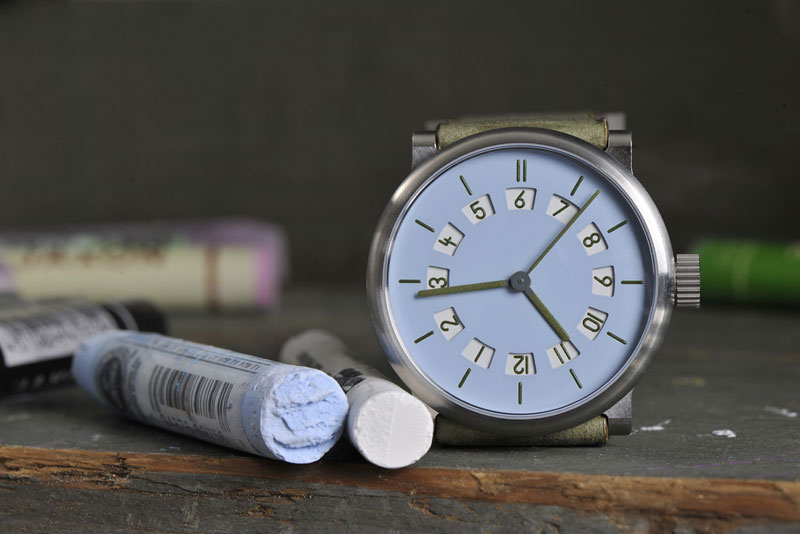
The watches from Ochs und Junior still intrigue me with their down to the earth approach. The ingenious technical solutions, which show the out-of-the-box thinking of Ludwig Oechslin, offer magnificent and almost simple solutions for complications that are usually solved with dozens of parts.
Maybe the Due Ore is Ochs und Junior’s most simple watch as it doesn’t have a moon phase or calendar complication. However it features a nice and handy complication, being a second timezone. The second timezone on the Due Ore, which we reviewed earlier this year, might look like a simplified second time zone, however that’s just the visual part. When we’re talking about usability, it offers a fully operational – and very handy – second timezone that also looks good!

How does it work? Suppose that one of my friends lives in New York City and we like to call each other from time to time. New York City is in the GMT – 5 hours timezone and I’m living in the Netherlands, which is GMT + 1. The difference is 6 timezones or 6 hours and this is number is moved to the aperture at 12 o’clock. The photo above shows that the local time is 4:44 and the time in New York is 10:44.
The second timezone disk can be turned by the crown (pull out 1 click), as the mechanism replaces the date mechanism. In order to work properly and always show the time in a designated second timezone at one glance, the second timezone disk does not rotate.
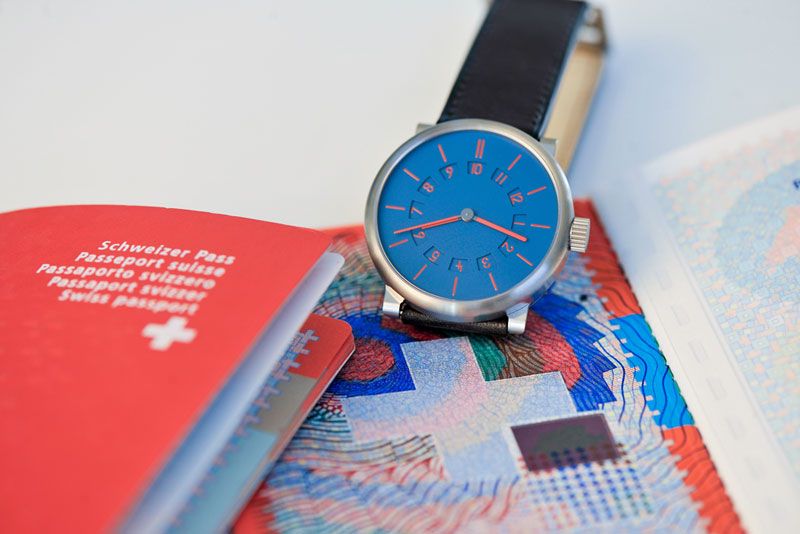
The photo above shows 10 hours of difference with the local time. One of the places in the world in the GMT – 9 timezone is Anchorage, Alaska. So the Due Ore with bright blue dial and red elements, shows that the local time is 8:17 and the time in Anchorage is 6:17. When it’s 8:17 AM in the Netherlands, it is 6:17 PM in Anchorage. The second timezone indication is based on a 12-hours indication, so it doesn’t indicate whether it’s day or night in the other timezone.
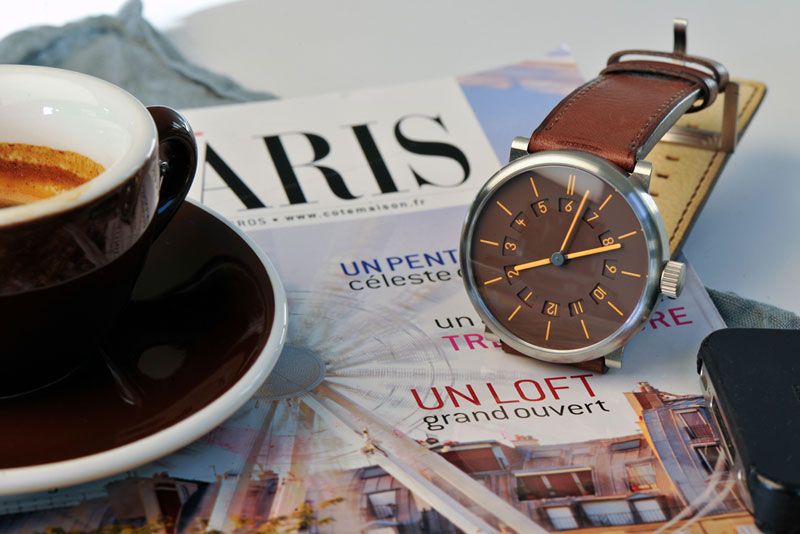
As an admirer of the brand I’m glad that Ochs und Junior always have loads of very nice ‘mood-photos’ on their website and the always informative Ochsenblog, their own blog. Photos like these always make me wish I had many, many watches, so I can easily change according to my taste of the day. A brown dial for drinking a nice espresso in the morning and changing for a grey dial on green strap for the afternoon.
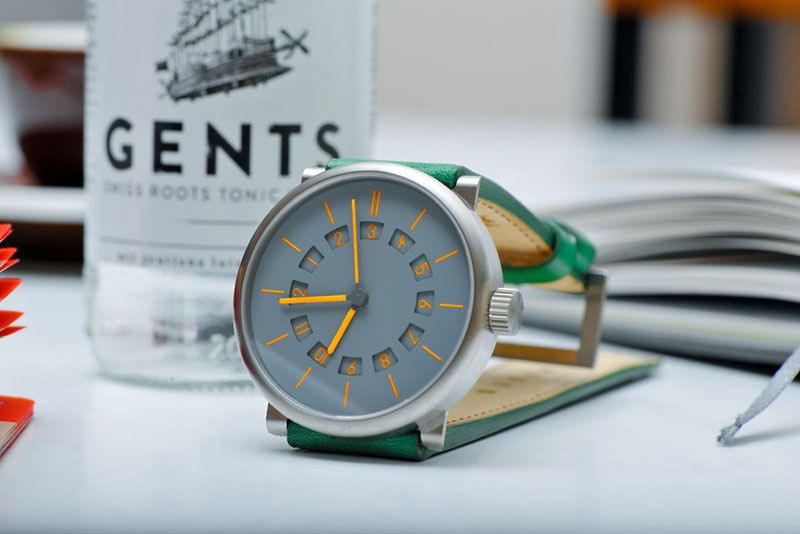
The following Due Ore with a black dial comes close to the one I’ve reviewed earlier this year. Its dark navy blue dial comes really close to the black dial of the Due Ore in the photo below. All watches in the Tinta collection are available in every color you can imagine! You can mail them the ISO color code of your choice; it’s that simple.
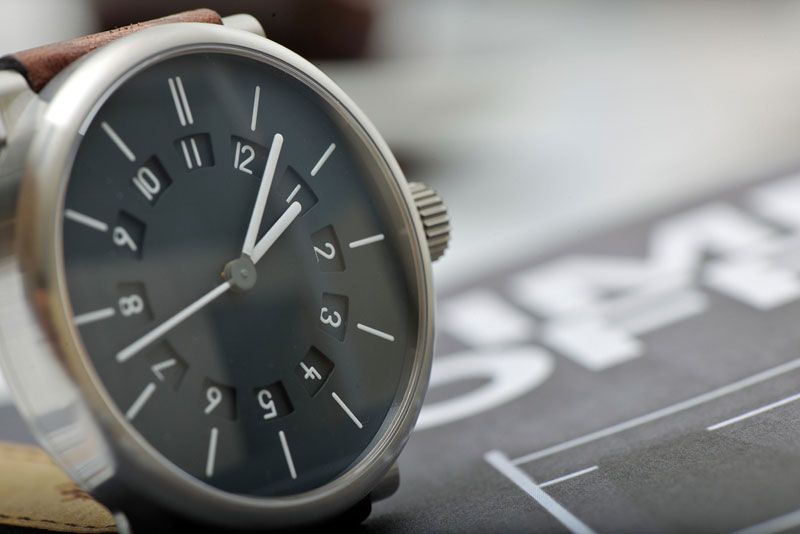
The Due Ore is part of the Tinta collection, which all come in a 42 mm titanium case, however a 39 mm size is also available. One thing that I’m very exited about, is that the Anno Cinquanta is now also available as Anno Tinta, meaning no precious metal anymore and for a more friendly price. The photo below shows the current Tinta collection, comprising of a Mese Tinta, Selena Tinta, Due Ore Tinta and now the Anno Tinta. Soon all info will be available on the new Ochs und Junior website that should be online in a few days.
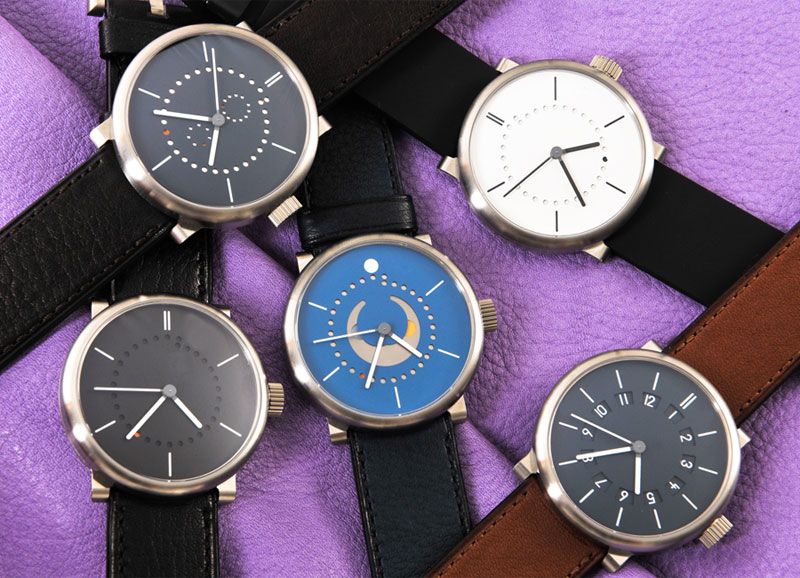
For more info about availability, different models and all possibilities when it comes to colors, check out the Ochs und Junior website.
This article is written by Frank Geelen, executive editor for Monochrome Watches.




3 responses
First exemple: isn’t it 4:44 and 10:44?
You’re absolutely right, Nesta! Thanks for notifying me!
Nice review, Frank. You really captured the Tinta collection and gave a great explanation of they work. One of the coolest dual timers out there!